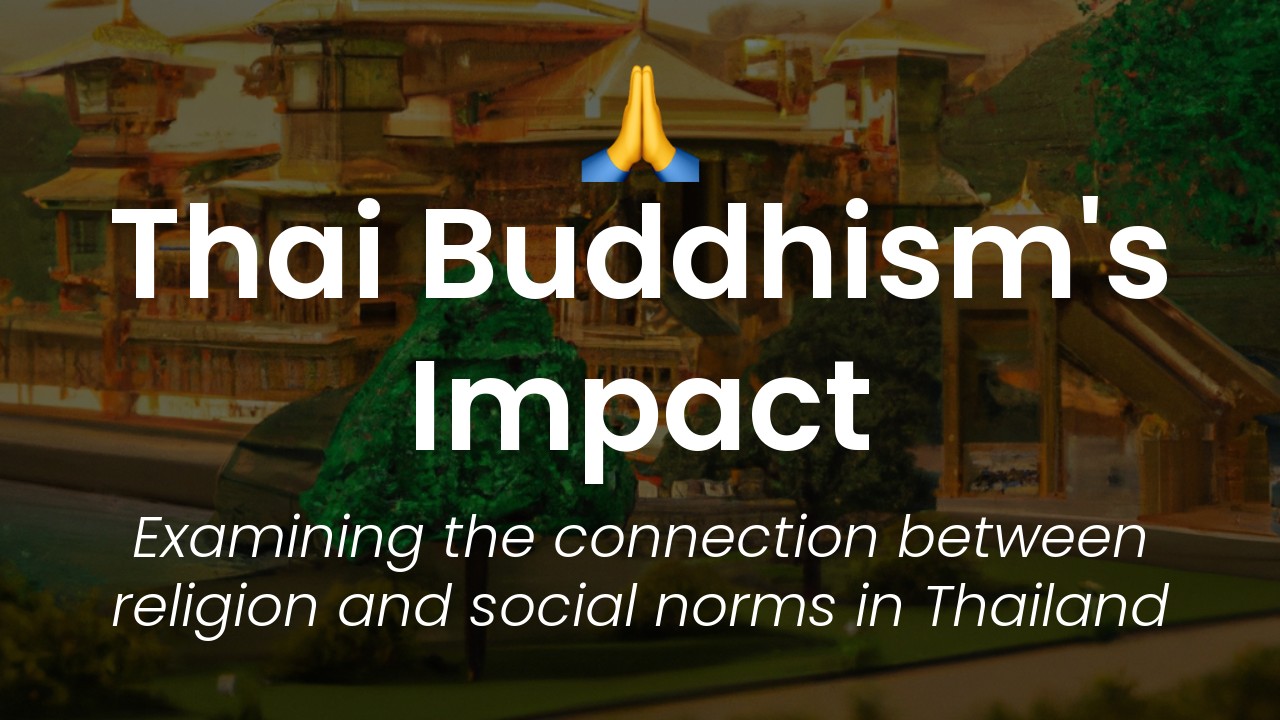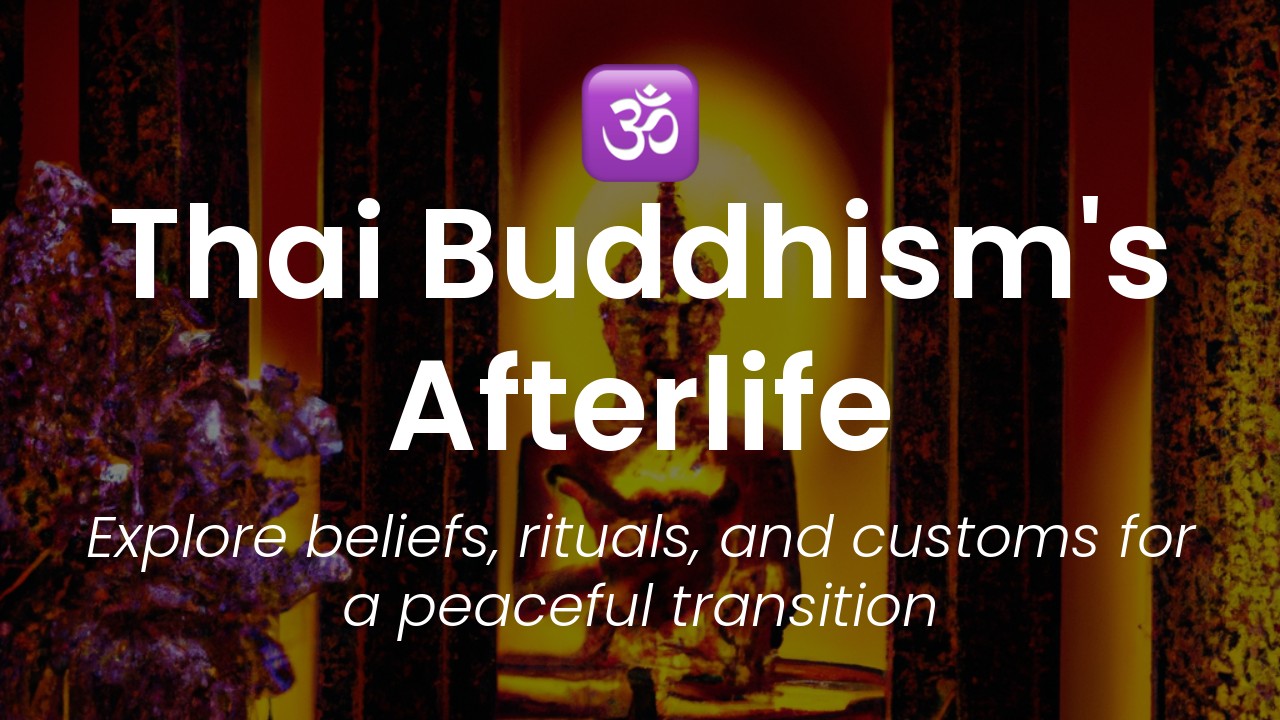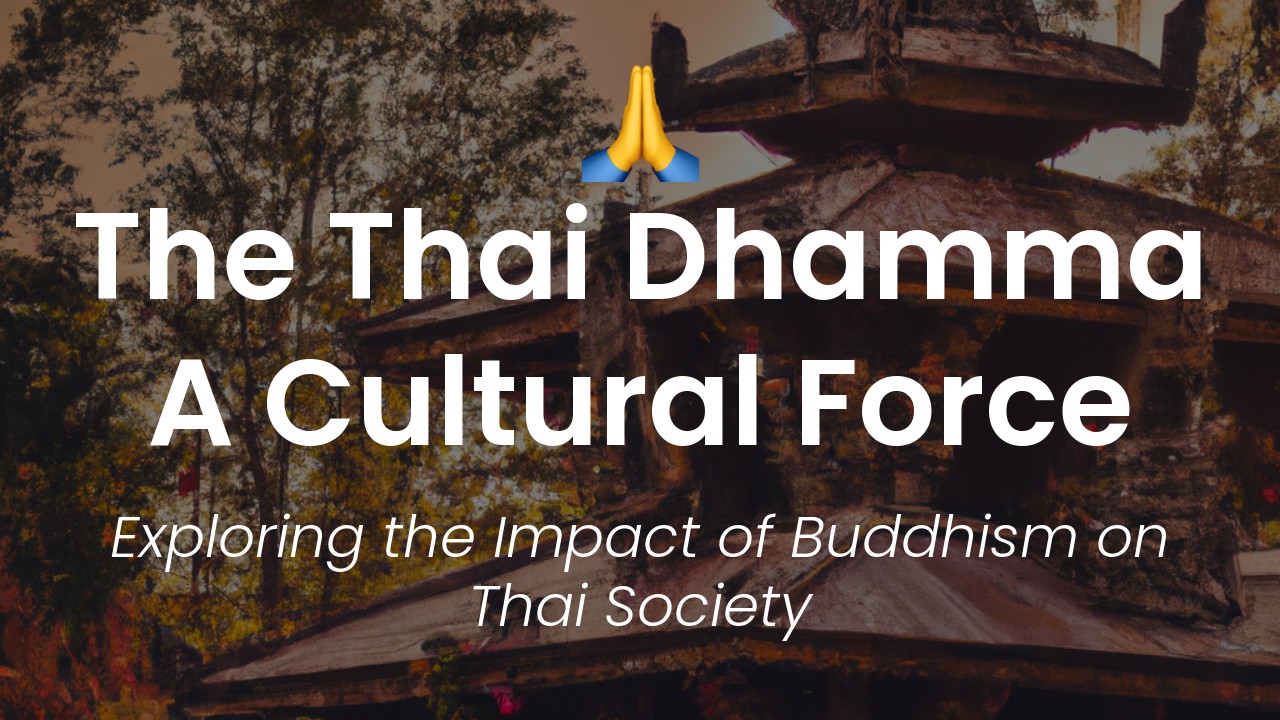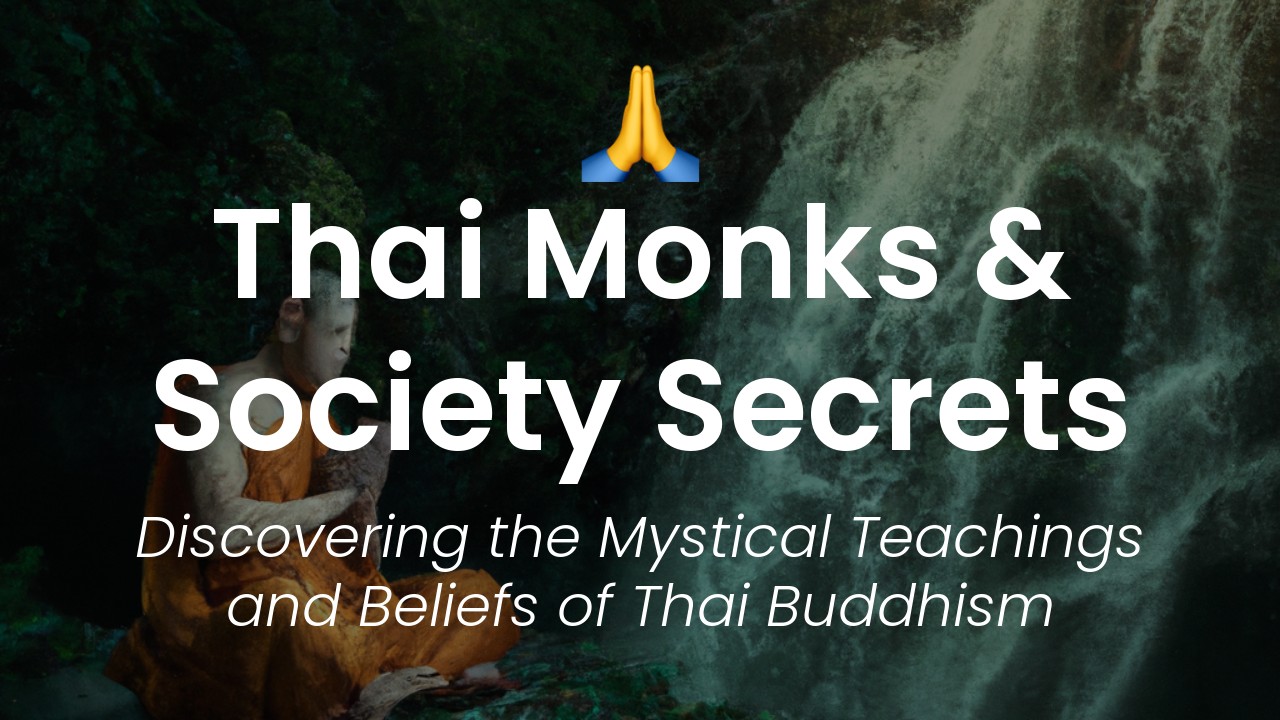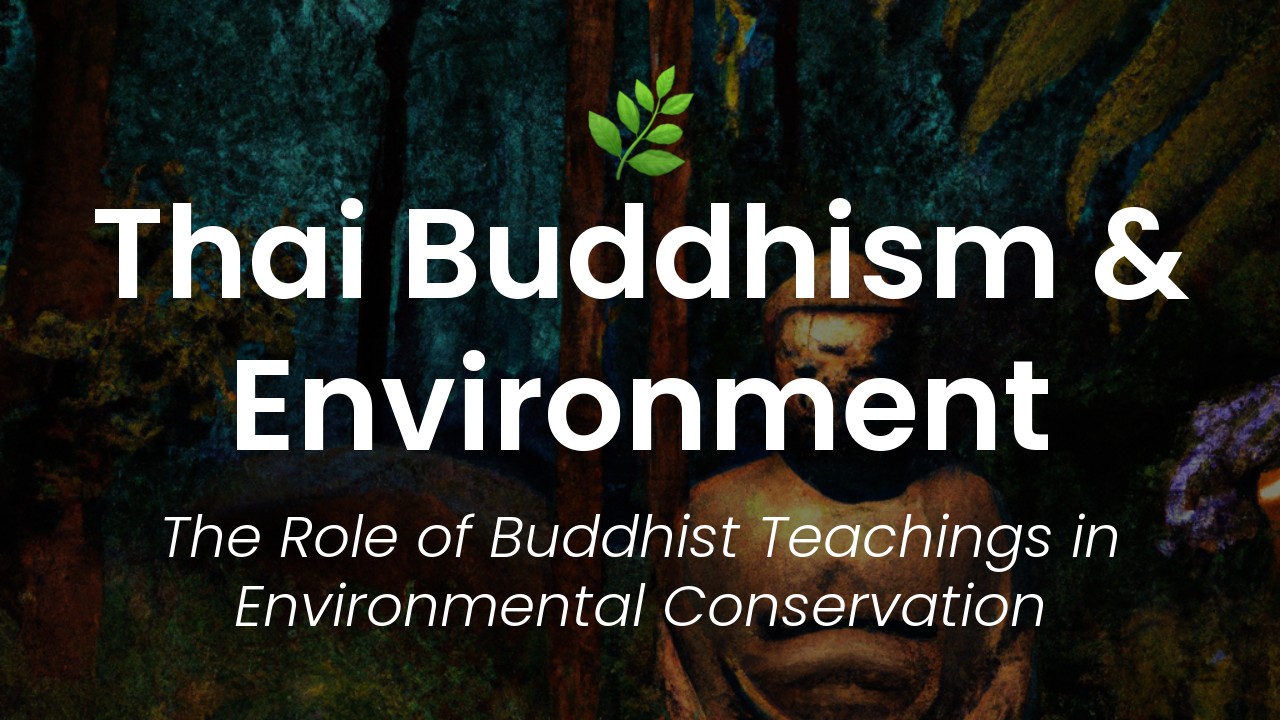I have always been fascinated by the role of religion in Thai society. From the colorful festivals to the ubiquitous wats (Buddhist temples), religion seems to be deeply ingrained in the fabric of Thai culture. But it wasn't until I started studying Thai Buddhism that I truly began to understand the way this ancient religion has shaped the country.
In this blog post, I want to take a closer look at the impact of Thai Buddhism on society. As you may know, Buddhism is the dominant religion in Thailand, with over 93% of the population identifying as Buddhist. But what does this mean, exactly? How does Buddhism influence the way Thai people think and behave?
First, it's important to understand the basics of Thai Buddhism. While there are many different types of Buddhism, Thai Buddhism is a unique blend of Theravada Buddhism, animism, and Hinduism. It incorporates elements of traditional Thai beliefs and practices, such as spirit houses and ancestor worship, as well as the teachings of the Buddha. This synthesis has created a rich and complex religious tradition that permeates every aspect of Thai life.
A Brief History of Thai Buddhism
Buddhism arrived in what is now Thailand over 2,000 years ago, likely brought by Indian traders. However, it was not until the 13th century that it became the dominant religion in the region, replacing animism and Hinduism. The spread of Buddhism was aided by the support of powerful rulers, who saw it as a means of consolidating their power and gaining legitimacy.
Over time, Thai Buddhism developed its own distinct character, with a unique blend of Theravada teachings, local beliefs and practices, and elements of Mahayana Buddhism. Today, over 90% of Thais are Buddhist, making it a central and enduring part of Thai society and culture.
Key Beliefs and Practices
At the heart of Thai Buddhism are the Four Noble Truths and the Eightfold Path. The Four Noble Truths teach that suffering is a fundamental part of existence, that the cause of suffering is craving and attachment, that suffering can be overcome, and that the way to overcome suffering is through the Eightfold Path.
The Eightfold Path consists of Right Understanding, Right Intent, Right Speech, Right Action, Right Livelihood, Right Effort, Right Mindfulness, and Right Concentration. Together, these teachings provide a roadmap for how to live a life of morality, wisdom, and meditation – the three pillars of Buddhism.
In addition to these core teachings, Thai Buddhism also includes a variety of rituals and practices. For example, merit-making – the act of doing good deeds to build up positive karma – is an important part of daily life. Common merit-making practices include giving donations to monks, helping others, and making offerings at temples.
The Role of Monks in Society
Monks are the most visible symbol of Thai Buddhism, with their distinctive orange robes and shaved heads. They play a critical role in Thai society, serving as scholars, teachers, and spiritual leaders.
In addition to leading religious ceremonies and providing counseling and guidance to laypeople, monks also serve as a source of social welfare and support. Monks are often called upon to perform funerals, weddings, and other important ceremonies, as well as to provide comfort and assistance in times of need.
Furthermore, many Thai boys and men spend at least a few months as monks in order to gain spiritual merit and to honor their families. This practice, known as ordination, is seen as a rite of passage in Thai culture and can be seen as part of a larger effort to cultivate moral and ethical values in young people.
Buddhist Ethics and Social Responsibility
Buddhist ethics emphasize compassion, altruism, and non-violence. These values are reflected in many aspects of Thai society, including laws and regulations around social welfare and environmental protection. For example, in recent years Thailand has implemented policies aimed at promoting sustainable development, combating corruption, and protecting human rights.
Furthermore, Thai Buddhism has long placed a strong emphasis on the idea of "sufficiency economy," which emphasizes living modestly and sustainably, and avoiding excessive materialism and consumption. This concept has gained renewed attention in recent years as a response to the global economic crisis, and has been championed by both government officials and Buddhist leaders as a way to build a more resilient and equitable society.
Festivals and Ceremonies
Throughout the year, Thailand is home to a wide variety of festivals and ceremonies that reflect the diversity and richness of its Buddhist heritage. Many of these celebrations have become important tourist attractions, drawing visitors from around the world.
One of the most well-known festivals is Songkran, the Thai New Year, which takes place in April and is celebrated with water fights, parades, and offerings at temples. Other important festivals include Loy Krathong, a celebration of the full moon in November when people release floating lanterns onto rivers and lakes, and Makha Bucha Day, when Buddhists gather to commemorate the day that the Buddha delivered one of his most important sermons.
Impact on Thai Culture and Art
Thai Buddhism has had a profound impact on Thai culture and art. From ancient temples and sculptures to modern film and literature, the influence of Buddhism can be seen in a wide range of artistic expressions.
One of the most iconic examples is the Temple of the Emerald Buddha, which houses a legendary statue of the Buddha carved from a single piece of jade. This temple, located within the Grand Palace in Bangkok, is one of the most important sites in Thailand and draws millions of visitors each year.
In addition to its architectural and artistic influences, Thai Buddhism has also played a role in shaping social norms and behaviors. For example, concepts such as karma, merit, and compassion are deeply ingrained in Thai culture and are reflected in everyday interactions between people.
Future Challenges and Opportunities
As with any religion or culture, Thai Buddhism faces a number of challenges and opportunities in the years ahead. One major challenge is the need to adapt to a rapidly changing social and economic landscape, characterized by globalization, urbanization, and digitalization.
At the same time, there are also opportunities to build upon the strengths and resilience of Thai Buddhism, and to leverage its core values and teachings to help address some of the key challenges facing Thai society and the world as a whole. Whether by promoting sustainability and social justice, fostering greater interfaith dialogue, or engaging with new technologies and media, Thai Buddhists are poised to play an important and dynamic role in shaping the future of their country and beyond.

